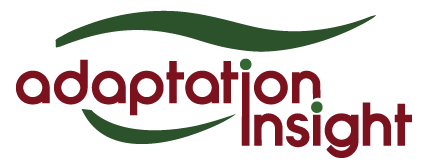I’m a natural scientist by training—bachelor’s degree in geology and biology, a stint as a genetic ecotoxicologist, and a PhD in marine ecology. Like many of my peers, when I hear people talking about the science-management gap or the science-policy gap my subconscious turns “science” into “natural science.” But when I started reading some of the seminal papers on this problem (e.g. Weiss 1979), many of them were about the use of social science research.
This got me thinking. Why do so few natural scientists seeking to increase the use of their own work in conservation make use of social science information about effective ways of doing that? Why don’t I make better use of it? When I look at the reasons I think I don’t take advantage of social science research as much as I might, they look a lot like the reasons natural resource managers and policy-makers might not always make use of natural science information:
- Lack of time. I have limited time, so I tend to focus my reading on topics I feel are most central to my work. Over the years this has shifted across a variety of topics, from salt marsh ecology to developmental biology to evolution to climate change adaptation. Even though I know social science research is relevant, it hasn’t previously gotten the same level of priority as natural science.
- Lack of familiarity. I’m not very familiar with social science journals or researchers, and don’t have the theory or knowledge bank against which to judge methods or findings critically. I don’t have a sense for who’s respected and who isn’t, what journals are top-notch and which are the “Weekly World News” of their field. This makes it harder to separate the wheat from the chaff.
- Language issues. In some social science papers, the jargon gets to be too much. Some of it I don’t understand, and some of it sounds weird or pretentious. Beyond the jargon, there are all kinds of unspoken assumptions, so that even if I understand the words I may not understand the full meaning.
- Few close social science partners. Like most people, when I’m coming up with names for possible collaborators or speakers or advisory group members, I tend to stick with folks I know, whose names I know, or who are recommended by someone I know. While I could easily list a dozen or more natural scientists I’d love to partner with, I know far fewer social scientists well enough that I’d call them up and ask them to collaborate.
- The knowing-doing gap. This is an age-old problem, and I’m sure I’ll dedicate an entire column to it in the future. Suffice it to say that learning a skill or a language in a classroom or by reading about it is very different from putting that knowledge to use, and transferring what you know from one set of experiences to a different context isn’t always natural.
If I can use my own experience to help me understand why people don’t always apply science to management or policy decisions, can looking at what increases my use of social science help me understand what might increase the use of science by managers and policy makers? What have I been doing to increase my own use of social science? Has it worked?
- Make it a higher priority. This is a biggie, and it’s not a one-time thing. I still find myself thinking that a few smart people and some common sense ought to be enough. Sometimes that’s true, but other times it could lead me to miss out on some important and useful information.
- Read some of the literature. I started with some more conceptual papers that gave a great sense for the state of the field, then looked deeper into the evidence base for claims or concepts that were particularly interesting to me. Some of those initial papers were recommended by friends, some I found while reading more popular press or grey literature material. I’ve also picked up a few books as they get recommended to me.
- Get to know some social scientists. While I love reading the literature myself (I really do!), there’s no substitute for knowing people actually in the field of interest. The more folks you know, the more likely you are to know people who are willing and able to provide knowledgeable answers to your questions, and who would be fun and effective partners on projects.
- Be willing to experiment. Trying out unfamiliar or unpopular ideas is challenging, even if you have some evidence to back you up. But I find that trying new approaches, even if they bomb, helps me improve my work overall. It’s just like adaptive management, but for figuring out to increase the use of science in policy and management!
But the ostensible focus of this blog is making climate-informed decisions, so how the heck does all this relate? Well, for me it comes back to taking the time to analyze and structure the problem before formulating a solution (i.e. deciding what to do). For example, focusing on disseminating climate change information as a key approach to increasing its use assumes that the problem is that people don’t have access to the information. But that’s not always true (e.g. “If Dissemination is the Solution, What is the Problem?”). While thoughtlessly generalizing from ourselves to others can mislead, sometimes looking at what actually underlies our own choices and behavior can help us focus on what matters for changing the behavior of others.
